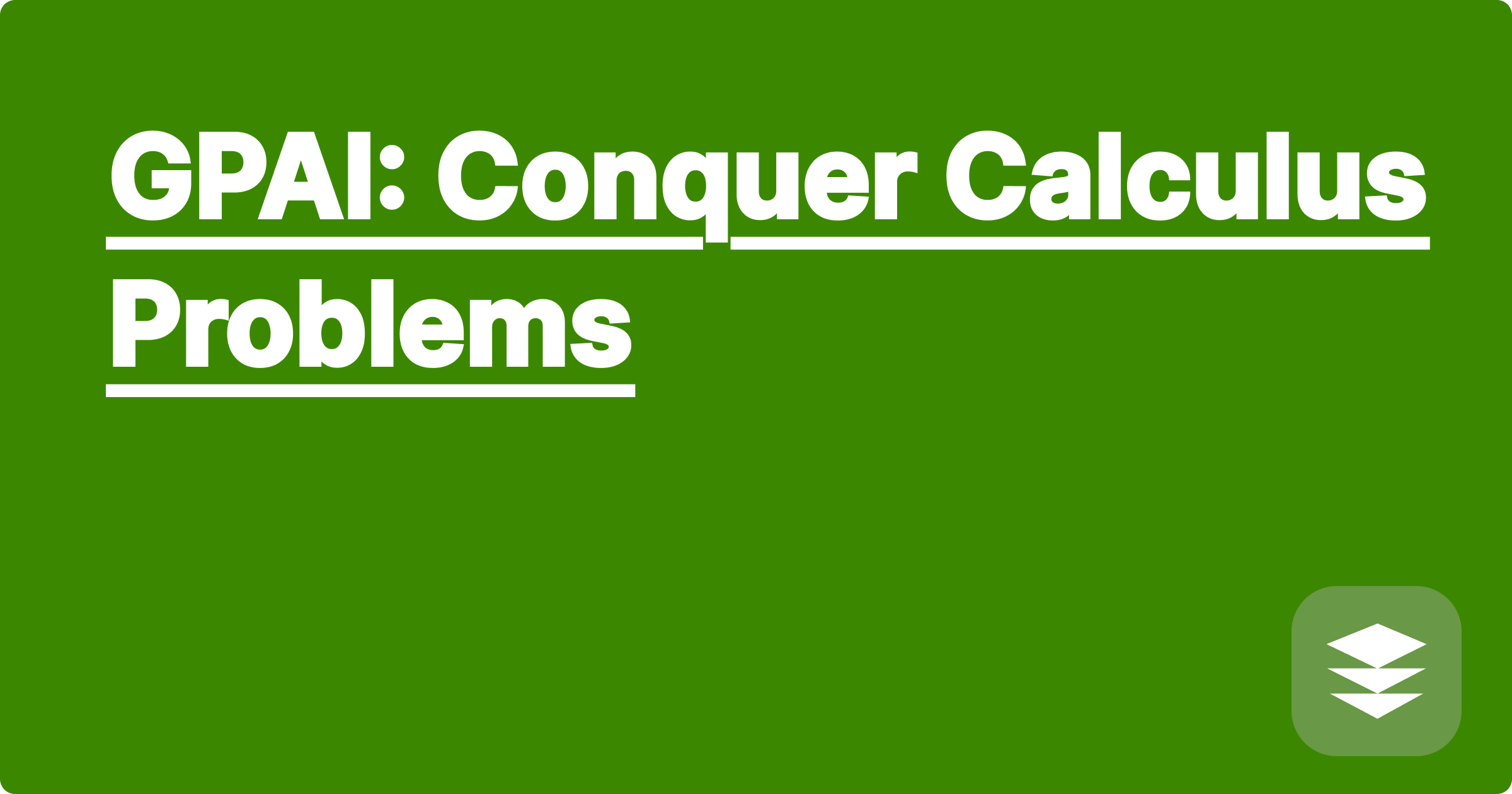
STEM fields often present formidable challenges, particularly in mathematically rigorous subjects like calculus. Many students and researchers struggle with complex integrals, differential equations, and series expansions, hindering their progress and understanding. Artificial intelligence (AI) offers a powerful new approach to tackling these difficulties, providing tools that can assist with problem-solving, visualization, and conceptual understanding. AI can act as a supplementary resource, enabling learners to explore different approaches, verify their work, and gain deeper insights into the underlying mathematical principles.
For STEM students and researchers, mastering calculus is often crucial for success. Calculus forms the foundation of numerous scientific disciplines, from physics and engineering to economics and computer science. The ability to apply calculus concepts effectively is essential for modeling real-world phenomena, analyzing data, and developing innovative solutions. AI-powered tools can significantly enhance the learning and application of calculus, empowering students to overcome obstacles and researchers to accelerate their work. These tools can offer personalized support, adapt to individual learning styles, and provide on-demand assistance whenever needed.
Calculus, at its core, deals with the study of continuous change. It encompasses two major branches: differential calculus, which focuses on instantaneous rates of change and slopes of curves, and integral calculus, which deals with accumulation of quantities and areas under curves. These concepts are expressed through various mathematical notations and operations, including derivatives, integrals, limits, and infinite series. Many students encounter difficulties grasping these concepts, particularly when dealing with complex functions, multivariable calculus, or applications to real-world problems. The abstract nature of calculus can make it challenging to visualize and understand the underlying principles, leading to frustration and a lack of confidence. Furthermore, traditional learning resources may not always provide the personalized support and interactive feedback needed for effective learning.
AI tools like ChatGPT, Wolfram Alpha, and Claude offer a novel approach to solving calculus problems. These tools leverage natural language processing and powerful computational engines to understand and respond to user queries. They can interpret mathematical expressions, perform symbolic computations, generate step-by-step solutions, and even provide explanations and visualizations. For instance, a student struggling with a tricky integral can input the problem into Wolfram Alpha, which can then provide the solution along with alternative forms, series expansions, and graphical representations. Similarly, ChatGPT can be used to explain a specific calculus concept, provide examples, and even generate practice problems. These AI tools can serve as personalized tutors, offering on-demand support and customized feedback.
Using AI tools for calculus problem-solving is generally straightforward. First, clearly define the problem you want to solve. This might involve writing down the equation, specifying the variables, and outlining any constraints or boundary conditions. Next, choose an appropriate AI tool based on the specific task. For symbolic computations and visualizations, Wolfram Alpha is often a good choice. For explanations and conceptual understanding, ChatGPT or Claude can be more helpful. Then, input the problem into the chosen AI tool, using clear and concise language. For example, if you want to find the derivative of a function, you can simply type "derivative of x^2 + 2x" into Wolfram Alpha. Finally, carefully examine the output provided by the AI tool. Verify the solution, understand the steps involved, and explore any additional information or visualizations offered.
Consider the problem of finding the integral of sin(x) from 0 to pi. Inputting "integral of sin(x) from 0 to pi" into Wolfram Alpha will yield the correct answer of 2. Furthermore, it can show the step-by-step integration process, graphical representation of the area under the curve, and even related properties of the sine function. Another example is using ChatGPT to understand the concept of limits. Asking ChatGPT "explain the concept of limits in calculus" will provide a detailed explanation, including the definition, examples, and common misconceptions. These examples demonstrate the practical utility of AI tools for solving calculus problems and enhancing conceptual understanding. One can also explore more complex problems, like solving differential equations or finding the volume of a solid of revolution, using these tools.
To effectively utilize AI tools in STEM education and research, it's essential to develop a strategic approach. First, focus on understanding the underlying concepts rather than simply relying on the AI for answers. Use the AI tools to supplement your learning, not replace it. Second, actively engage with the AI tools by asking clarifying questions, exploring different approaches, and verifying the results. Don't passively accept the output without critical evaluation. Third, practice regularly and apply the learned concepts to real-world problems. AI tools can provide valuable support, but mastery comes through consistent practice and application. Finally, be mindful of the limitations of AI tools. They are powerful tools, but they are not infallible. Always double-check your work and consult with instructors or peers when needed.
In conclusion, AI offers a transformative approach to learning and applying calculus. By leveraging the power of AI tools like ChatGPT, Wolfram Alpha, and Claude, STEM students and researchers can overcome challenges, deepen their understanding, and accelerate their progress. Embrace these tools as valuable resources, but remember that true mastery comes from active learning, critical thinking, and consistent practice. Explore these tools, experiment with different approaches, and discover how AI can empower you to conquer calculus and excel in your STEM endeavors.